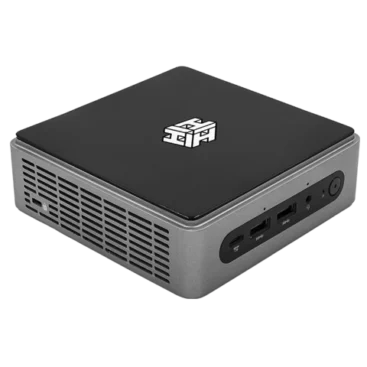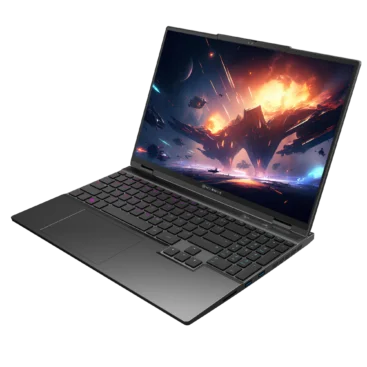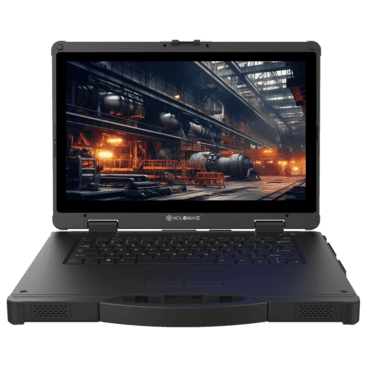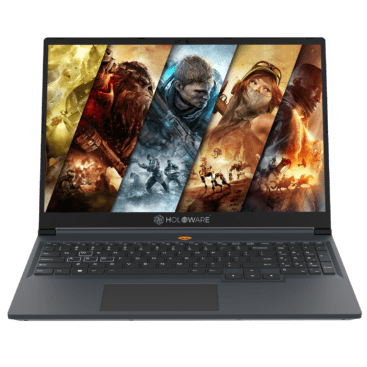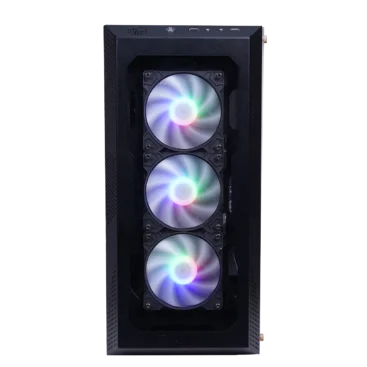
Innovation and Customization in Computer Solutions
Personalization and Innovation in Computer Solutions
Businesses are constantly striving to outdo each other in delivering exceptional customer experiences. As technology evolves at an unprecedented pace, consumer expectations are reaching new heights. Today’s consumers demand solutions that are not just functional, but also personalized, innovative, and tailored to their unique needs. In this relentless race, companies that fail to adapt risk falling behind, while those that embrace the power of cutting-edge technologies and personalization stand to gain a significant competitive advantage. This is particularly true in the computer solutions industry, where personalization and innovation have become the twin pillars of customer satisfaction. This article explores how businesses in this industry can leverage these two elements to redefine the customer experience and establish themselves as industry leaders.
A Battleground for Personalization and Innovation
The computer solutions industry, in particular, has emerged as a battleground where personalization and innovation are the keys to unlocking unparalleled customer satisfaction. From powerful workstations to sleek laptops and intuitive software, the companies that can anticipate and meet the diverse requirements of their clients are poised to redefine the customer experience and cement their position as industry leaders.
Personalization
The Rise of Personalization
One-size-fits-all approaches are rapidly becoming obsolete, personalization has emerged as the new frontier of customer engagement. Consumers today crave tailored experiences that speak directly to their unique preferences, workflows, and aspirations. They expect solutions that seamlessly integrate into their existing ecosystems, streamlining processes and enhancing productivity.
Leveraging Data and Technology for Personalized Solutions
Computer solution providers have recognized this shift and are actively pursuing personalization strategies that go beyond mere cosmetic customization. By leveraging advanced data analytics, machine learning, and user behavior tracking, these companies can gain deep insights into their customers’ needs, enabling them to design and deliver truly personalized hardware and software solutions.
Advanced Data Analytics
Advanced data analytics allows companies to process and analyze vast amounts of customer data to identify patterns and trends. This insight enables the creation of solutions that are highly tailored to individual user preferences and requirements.
Machine Learning
Machine learning enhances personalization by enabling systems to learn from user interactions and improve over time. It helps in predicting user needs and automating personalized experiences, thereby increasing efficiency and satisfaction.
User Behavior Tracking
User behavior tracking involves monitoring and analyzing how customers interact with products and services. This data provides valuable feedback that can be used to refine and customize offerings, ensuring they align closely with user expectations and preferences.
Real-World Examples of Personalized Solutions
Visual Effects Studio
To empower artists and bring their creative visions to life, computer solution providers must deliver personalized solutions finely tuned to the demands of the VFX industry
High-Performance Hardware Components
Powerful Multi-Core Processors
- Purpose: Enable rapid execution of complex computations and efficient rendering of visual effects
- Benefits: Significantly reduces rendering times and enhances overall processing speed, allowing the studio to handle intensive tasks smoothly
High-End Graphics Cards (GPUs)
- Purpose: Provide the necessary computational power for rendering detailed graphics, animations, and special effects
- Benefits: Ensures high-quality output and real-time previews, enhancing the studio’s ability to create and edit intricate visual effects seamlessly
Ample RAM
- Purpose: Supports multitasking and handling of large files without performance degradation.
- Benefits: Prevents slowdowns and crashes, ensuring a stable and efficient working environment for artists working on complex projects.
Specialized Software Components
Industry-Leading Rendering Software:
- Purpose: Facilitate the creation of final visual outputs from 3D models and animations with high accuracy and efficiency.
- Benefits: Provides advanced tools and features that meet the high standards of the visual effects industry, enabling superior quality rendering.
Workflow and Creative Process Optimization:
- Purpose: Ensure the software configuration aligns with the studio’s specific workflows and creative methodologies.
- Benefits: Enhances productivity by streamlining tasks and minimizing disruptions, allowing artists to focus more on creative aspects rather than technical issues.
Personalization Support
Hardware:
- Customization of processor configurations, GPU selections, and RAM capacities based on the studio’s workload demands and specific project requirements.
Software:
- Configuration of rendering software settings, plug-ins, and interface layouts to align with the studio’s preferred rendering techniques, workflow structure, and artist preferences.
Implementation Strategy
Hardware Integration:
- Analysis: Collaborate with the studio to assess their processing needs and evaluate their current hardware infrastructure.
- Customization: Customize hardware configurations based on the studio’s requirements, ensuring optimal performance and scalability.
- Deployment: Implement the personalized hardware solutions across the studio’s workstations or render farms, ensuring seamless integration and minimal disruption to ongoing projects.
Software Customization:
- Assessment: Conduct workshops or training sessions to understand the studio’s workflow challenges and software preferences.
- Tailoring: Customize software settings, shortcuts, and interface layouts to match the studio’s established workflows and artist preferences.
- Training: Provide comprehensive training and support to the studio’s technical team and artists to maximize the benefits of the personalized software solutions.c
Healthcare Research Facility
To effectively support a data scientist working at a leading healthcare research facility, analyzing massive datasets and complex algorithms, computer solution providers must focus on offering personalized solutions optimized for efficient data processing and analysis. Here’s how they can achieve this:
Personalized Hardware and Software Solutions
Hardware
- Specialized Hardware Accelerators: Integration of hardware accelerators like GPUs or TPUs to enhance parallel processing capabilities, enabling faster analysis of large datasets and complex algorithms.
- Custom-Built Systems: Tailoring hardware configurations to meet the specific needs of healthcare research, such as high-performance processors, ample memory, and storage capacity.
Software
- Tailored Software Tools and Libraries: Development or customization of software tools and libraries designed to streamline analytical pipelines and data visualization processes, optimizing efficiency and accuracy in data analysis.
- Integration with Healthcare Systems: Seamless integration of software solutions with existing healthcare systems and databases to ensure compatibility and data interoperability.
Personalization Support
Hardware
- Proactive Maintenance and Support: Continuous monitoring of hardware performance and reliability, with proactive repairs and replacements as needed to minimize downtime and ensure uninterrupted research activities.
- Scalability Planning: Anticipating future data processing needs and scalability requirements, with flexible hardware solutions that can adapt to evolving research demands.
Software
- User Training and Support: Comprehensive training and ongoing support for data scientists to maximize the utilization of specialized software tools and libraries, empowering them to leverage advanced analytics techniques effectively.
- Customization and Updates: Regular updates and customization of software solutions based on feedback from researchers, ensuring alignment with evolving research methodologies and requirements.
Building Long-Term Partnerships
By offering personalized solutions tailored to the unique needs of healthcare research facilities, computer solution providers can establish themselves as trusted partners rather than mere vendors. They become integral to their clients’ success, fostering long-term relationships built on a deep understanding of individual needs and a commitment to delivering tailored experiences. Through proactive support, continuous innovation, and a collaborative approach to problem-solving, computer solution providers can contribute to the advancement of healthcare research and the improvement of patient outcomes.
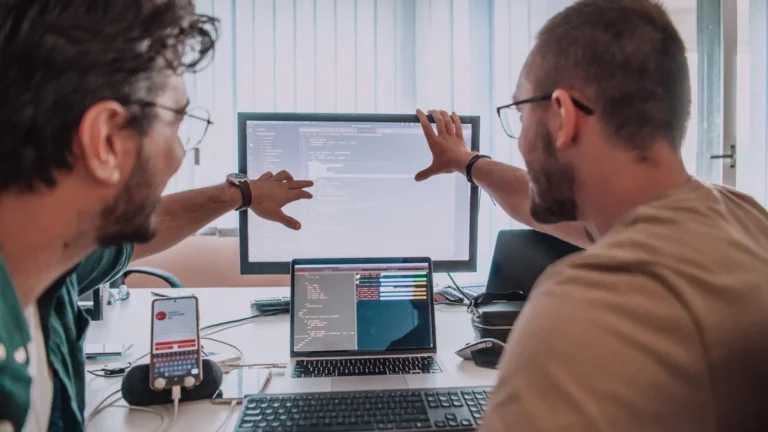
Innovation
The Importance of Innovation
Innovation is the cornerstone of progress and a driving force behind customer satisfaction. Companies that embrace innovation are not merely meeting current demands but are actively shaping the future by anticipating and setting new trends. By continuously pushing the boundaries of what is possible, innovative companies position themselves as industry leaders, offering solutions that empower their customers to achieve their full potential.
Forms of Innovation in Computer Solutions
Innovation in computer solutions encompasses a wide range of areas, from groundbreaking hardware designs and advanced cooling systems to cutting-edge software architectures and intuitive user interfaces. It involves the seamless integration of emerging technologies, such as virtual reality (VR), augmented reality (AR), and artificial intelligence (AI), into powerful computing platforms that unlock new realms of possibility. These innovations can revolutionize the way we interact with technology, enabling users to accomplish tasks more efficiently, creatively, and immersively.
Real-World Examples of Innovation
Automotive Industry
Software-Based Innovations
Virtual Reality (VR) and Augmented Reality (AR) Solutions
- By integrating VR and AR technologies, automakers can create highly realistic virtual environments. Designers, engineers, and clients can experience and refine vehicle designs in real-time, enhancing collaboration, decision-making, and reducing the need for physical prototyping.
Artificial Intelligence (AI) and Machine Learning
- AI and machine learning can revolutionize various aspects of the automotive industry. AI-powered systems analyze vast amounts of data to optimize vehicle performance, predict maintenance needs, and assist in developing autonomous driving capabilities.
Collaborative and Cloud-Based Solutions
- Cloud-based solutions and robust data synchronization tools enable global teams within the automotive industry to collaborate seamlessly, regardless of location. This fosters improved communication, accelerates project timelines, and reduces the need for expensive hardware investments at multiple sites.
Advanced Simulation and Testing Platforms
- High-performance simulation and testing platforms allow automakers to virtually evaluate vehicle designs under various conditions, such as crash simulations, aerodynamic testing, and performance analysis. This significantly reduces the time and costs associated with physical testing while ensuring adherence to safety and regulatory standards.
Hardware-Based Innovations
High-Performance Computing Systems
- Providing powerful workstations and servers equipped with the latest processors and GPUs to handle complex simulations and data analysis tasks. These systems enable automakers to run intensive computations quickly and efficiently, driving innovation in vehicle design and testing.
Edge Computing Devices
- Utilizing edge computing devices to process data locally in vehicles for real-time analytics and decision-making. This is crucial for applications like autonomous driving, where immediate data processing and response are necessary.
IoT and Sensor Integration:
- Integrating IoT devices and sensors into vehicles to collect and transmit data about performance, environmental conditions, and user behavior. This hardware innovation supports software solutions for predictive maintenance, performance optimization, and enhanced user experiences.
Global Engineering Firm
Software-Based Innovations
Cloud-Based Computing Solutions
- Cloud-based computing solutions enable real-time collaboration, secure data sharing, and seamless access to powerful computing resources, regardless of location. This improves productivity and communication while reducing the need for expensive hardware investments at each site.
Virtual Collaboration Tools
- Advanced virtual collaboration tools, such as immersive virtual meeting rooms and shared virtual whiteboards, facilitate effective communication and ideation among distributed teams. This fosters a more cohesive and efficient working environment.
Artificial Intelligence (AI) and Machine Learning
- AI and machine learning capabilities can analyze complex data sets, identify patterns, and provide valuable insights to aid in decision-making processes. This optimizes project outcomes and enables data-driven strategies.
Hardware-Based Innovations
High-Performance Computing (HPC)
- For computationally intensive tasks like simulations, modeling, and large-scale data processing, providing access to high-performance computing (HPC) resources is essential. These resources can be offered through on-premises installations or cloud-based solutions, significantly accelerating project timelines and enabling the firm to tackle more complex and demanding projects.
By segregating these innovations, we can see how both software and hardware solutions contribute to enhancing the capabilities of a global engineering firm, driving efficiency, collaboration, and innovation.
Personalization and Innovation in Harmony
The Power of Harmonious Integration
While personalization and innovation are often discussed as separate concepts, their true power lies in their harmonious integration. When personalized solutions are infused with cutting-edge innovations, the customer experience transcends mere functionality and enters the realm of transformative experiences.
The Ideal Harmonious Solution
Imagine a scenario where a computer solution provider not only delivers a personalized workstation tailored to a client’s specific needs but also incorporates the latest advancements in hardware and software, such as advanced cooling systems, high-performance graphics processors, and intuitive user interfaces powered by artificial intelligence. This combination of personalization and innovation would not only ensure optimal performance and efficiency but also facilitate a seamless, intuitive, and adaptive user experience that evolves alongside the client’s changing needs.
Continuous Improvement through Customer Feedback
Furthermore, by fostering open communication channels and actively soliciting customer feedback, computer solution providers can continually refine and improve their offerings, seamlessly blending personalization and innovation into a dynamic, ongoing process. This iterative approach ensures that customers remain at the forefront of every decision, shaping the future of computer solutions and defining the standards of excellence in customer experience.
Embracing a Customer-Centric Mindset
Continuous Improvement through Customer Feedback
Ultimately, redefining the customer experience in the computer solutions industry hinges on adopting a customer-centric mindset that permeates every aspect of a company’s operations. From research and development to sales and support, every decision and action must be driven by a deep understanding of customer needs, preferences, and aspirations.
Fostering a Customer-Centric Culture
This mindset requires a cultural shift within organizations, fostering an environment where customer feedback is actively sought, valued, and integrated into the product development lifecycle. It demands a relentless pursuit of innovation, coupled with a willingness to challenge conventional wisdom and explore uncharted territories in the pursuit of delivering exceptional personalized experiences.
Transparency, Communication, and Collaboration
A customer-centric approach necessitates a commitment to transparency, open communication, and collaboration. Computer solution providers must cultivate partnerships with their clients, viewing them not merely as customers but as valued collaborators in the journey towards innovation and personalization.
Trusted Advisors and Partners
By embracing a customer- centric mindset, computer solution providers can position themselves as trusted advisors and partners, guiding their clients and empowering them to achieve their goals with unparalleled efficiency and creativity.
Concluding Thoughts
For the computer solutions industry personalization and innovation have emerged as the cornerstones of exceptional customer experience. By delivering tailored solutions that cater to individual needs and preferences, while continuously pushing the boundaries of what’s possible through cutting-edge innovations, computer solution providers can cement their position as industry leaders and foster long-lasting, mutually beneficial relationships with their clients.
However, achieving this harmonious fusion of personalization and innovation requires a customer-centric mindset that permeates every aspect of an organization’s operations. It demands a relentless pursuit of understanding customer needs, a willingness to embrace change, and a commitment to fostering open communication and collaboration.
Recent Posts
-
Holoware mini personal computer : Redefining Power and Versatility in Compact Computing
-
Great Laptops for Video Editing: Holoware's Ultimate Creative Guide
-
Mini PC Windows 11: Compact Computing Redefined
-
Holoware Laptops on EMI for Your Next Device
-
Startup Scheme for Laptops in India: Growth with Holo50
Recent Blogs
Holoware mini personal computer : Redefining Power and Versatility in Compact Computing
Great Laptops for Video Editing: Holoware's Ultimate Creative Guide
Mini PC Windows 11: Compact Computing Redefined
Holoware Laptops on EMI for Your Next Device
Startup Scheme for Laptops in India: Growth with Holo50
Holoware: The Best Selling Laptop in India
Best Laptop for Artificial Intelligence in India - Holoware Guide
Best SSD Laptops: Speed, Evolution & Why Holoware Stands Out
Unleashing the i7 Processor Power with Holoware
Choosing the Perfect IPS Screen Laptop by Holoware
About Holoware
Products & Services
Useful Links
© 2025 Holoware® Computers Pvt. Ltd. | Site Map | Privacy Policy | Terms & Condition
Tablet
AI Laptop

Location: Porur,Chennai
No of Openings: 1
Join our team as a Senior Accounts Executive, where you’ll manage client relationships and implement innovative financial strategies. Your expertise in analyzing account performance will drive growth and foster lasting partnerships. If you’re ready to make an impact, we want to hear from you.
Roles and Responsibilities:
- Daily Accounts Receivable Management: Execute daily credit accounting in Tally Prime to ensure accurate financial records.
- Accounts Receivable and Credit Control Management: Administer the accounts receivable process and implement credit control measures to optimize cash flow.
- Invoice Processing and Material Transfers: Handle invoice cancellations and efficiently oversee the transfer of materials to the warehouse.
- Sales Returns and Order Cancellations Management: Process sales returns, record entries, create Post Goods Issues (PGI), and reverse canceled orders for precise sales tracking.
- Dealer Loan Recovery Supervision: Manage the recovery of dealer loans, accurately reflecting these amounts as recoverable income.
- Dealer Debit Data Reporting: Upload monthly dealer debit information to Power BI through Microsoft Azure for accurate financial analysis.
- Bank Reconciliation Tasks: Conduct detailed bank reconciliations to ensure transaction accuracy and resolve any discrepancies.
- Customer Account Reconciliation: Reconcile customer accounts with the General Ledger (GL) to ensure data consistency and accuracy.
- General Ledger Review: Perform monthly reviews of GL accounts to ensure compliance and accuracy in financial reporting.
- Monthly Sales Report Preparation: Compile and present monthly sales flash reports, offering insights into sales performance and trends.
- Monthly Financial Closing Procedures: Manage the monthly closing process, finalizing financial statements and recording all transactions.
- Tax Compliance Management: Prepare and submit Tax Deducted at Source (TDS) returns and issue Form 16 and Form 16A for compliance purposes.
- Employee Payroll Administration: Oversee the timely and accurate processing of employee salaries in line with payroll policies.
- Project Bills and Payment Oversight: Oversee the management of project bills payable, ensuring timely processing of payments to vendors and contractors.
- Project Budget Allocation Management: Allocate project budgets according to expense categories, ensuring effective financial resource utilization.
- GST Compliance Oversight: Manage Goods and Services Tax (GST) returns and TDS calculations to ensure accurate reporting and compliance.
- Audit Coordination: Collaborate with internal and external auditors, providing all necessary documentation for smooth audit processes.
- Audit Process Coordination: Facilitate internal and Auditor General (AG) audits by preparing all necessary documentation for review.
- Government Fund Allocation Liaison: Work with government agencies to coordinate fund allocations, ensuring compliance with regulations.
- Monthly Management Information Reporting: Prepare and present detailed Monthly Management Information System (MIS) reports to senior management.
Key Skills:
- Accounting
- Financial Reporting
- Tally Prime
- Data Analysis
- Reconciliation
- Tax Compliance
- Negotiation
- Problem-Solving
- Time Management
- Team Collaboration
- Vendor Management
Location: Porur,Chennai
No of Openings: 4
Join our team as a Senior Hardware Engineer to design and optimize state-of-the-art computing systems. You’ll leverage your expertise to innovate hardware solutions, ensuring peak performance and reliability in our products. Collaborate with a talented team to tackle complex challenges and help shape the future of technology.
Roles & Responsibilities:
- Lead the assembly process of desktops, laptops, and servers ensuring adherence to technical specifications and quality standards.
- Supervise and train a team of assembly technicians and junior engineers, providing guidance and feedback.
- Collaborate with the R&D and design teams to implement manufacturing processes for new products.
- Develop and optimize workflow to increase efficiency and reduce assembly times and costs.
- Maintain detailed documentation of assembly procedures and product modifications.
- Conduct quality control checks and troubleshoot hardware issues before final product release.
- Ensure compliance with safety standards and regulations in the assembly line.
- Manage inventory of parts and tools required for assembly processes.
- Stay updated with industry trends, new technology, and best practices in hardware assembly.
Preferred candidate profile:
- Bachelor’s degree in Electrical Engineering, Mechanical Engineering, or a related field.
- Minimum of 5 years of experience in hardware assembly, preferably focusing on PCs, laptops, and servers.
- The maximum age limit is 42 years
- Proven track record of leading a team in a manufacturing or assembly environment.
- Strong technical skills with a deep understanding of computer hardware components and assembly techniques.
- Excellent problem-solving skills and attention to detail.
- Proficient in using assembly tools and equipment.
- Certifications related to hardware assembly or project management.
- Experience in an ISO-certified or other regulated environment.
Key Skills:
- Service Engineering
- Hardware Networking
- Computer Hardware
- Team Leading
- Chip Level Repairing
- After Sales – Service and Support
- Computer Assembling
Location: Porur,Chennai
No of Openings: 2
Seeking a Senior Executive – International Purchase to spearhead global procurement strategies and secure top-tier suppliers. Harness your expertise to drive cost efficiencies, negotiate high-impact deals, and ensure seamless cross-border operations. Ideal candidates excel in strategic sourcing and thrive in a dynamic, fast-paced environment. Elevate our international purchasing with your strategic vision and industry insight.
Roles and Responsibilities:
- Develop and implement procurement strategies that are cost-effective and aligned with the company’s production needs and budget constraints.
- Identify, evaluate, and select reliable vendors and suppliers. Negotiate contracts and terms of agreements to achieve favourable pricing and delivery terms.
- Maintain optimal levels of inventory to ensure uninterrupted production schedules while minimizing carrying costs and obsolescence.
- Ensure that all purchased items meet quality standards and specifications required by the production process.
- Monitor and control procurement budgets and expenditures. Implement cost-saving initiatives without compromising on quality or reliability.
- Coordinate with production planning and logistics teams to ensure timely availability of materials and components.
- Stay updated with regulatory requirements and ensure procurement activities comply with legal standards and company policies.
- Identify potential risks in the supply chain and develop mitigation strategies to avoid disruptions in production.
- Analyse procurement data and market trends to make informed decisions and optimize purchasing strategies.
- Build and maintain strong relationships with vendors, suppliers, and internal stakeholders to foster collaboration and achieve mutual goals.
Preferred Candidate Profile:
- Proven experience as a Purchase or in a similar role.
- Should have a strong International Procurement experience.
- Strong negotiation skills and the ability to build long-term relationships with suppliers.
- Excellent communication and interpersonal skills.
- Familiarity with supply chain processes and inventory management.
- Bachelors degree in Business Administration, Supply Chain Management, or relevant field.
Location: Porur,Chennai
No of Openings: 2
Dynamic Logistics Executive sought to streamline supply chain operations and optimize distribution networks. Leverage your expertise to drive efficiency, enhance customer satisfaction, and lead innovative solutions. Ideal candidates are proactive problem-solvers with a knack for strategic planning and team leadership. Join us to make a tangible impact in a fast-paced environment!
Roles and Responsibilities:
Imports:
- Receiving the documents from overseas Agents.
- Documents are forwarded to various Liner for IGM filing purposes.
- Follow up on the vessel status for all import shipments through online.
- Providing the vessel details and the IGM number to the consignee once their shipment arrives.
- Issuing the Delivery order to a variety of consignees.
- Regular communication with All Liners/Consignee & Overseas Agent for all Import Shipments.
- As per the Shipper Invoice & Packing List, have prepared the shipment checklist.
- Preparing the necessary documents for clearance purposes
- Regular interaction with Liner for all the shipments.
- BE filing follow-up with CHA and transport movement
- Follow up on the status of all the shipments and inform the same to the respective shipper
- Preparing the Invoices of Various parties.
- Planning for day-to-day clearance on a priority basis.
Exports:
- Booking the cargo for all export shipments to Liner / Consolidator.
- Arranging the Container Release order from the liner and forwarding to the Shipper or CHA
- Informing liner to post the form-13 to CHA ID
- Follow up the container to load on the booking vessel.
- Preparing the Bill of Lading through on-line to various sector
- Based on the Liner invoice, have generated our Invoice for Customers.
- Issuing the Bill of Lading/COO/SCOMET
- Co-ordinating with all Overseas agents/Liner / Shipper/CHA for all export shipments.
- Scrutiny the Freight rates from the Liner / Consolidator and provide the best rate to the shipper).
- SB filing follow-up with CHA and transport movement
Preferred Candidates Profile:
- Tally /SAP/ERP knowledge required.
- Should be strong in Shipping INCOTERMS
- Preparing the Profit & Loss for all shipments (Import & Export)
Location: Bangalore, Hyderabad & Mumbai
No of Openings: 5
We are seeking a Key Account Manager for Corporate Sales who plays a crucial role in driving revenue growth, maintaining strong client relationships, and ensuring customer satisfaction within key accounts. Their responsibilities require a blend of strategic thinking, interpersonal skills, and a deep understanding of both the client’s business and their own company’s offerings.
Preferred Candidate profile:
- Excellent communication, interpersonal and relationship-building skills
- Should have a strong experience in B2B sales.
- Ability to work both independently and collaboratively in a team setting.
- Keen analytical skills and a strategic mindset.
- Willingness to travel for business purposes.
- Proven track record in lead generation and communication
- Ability to work independently and collaboratively
- Experience in the IT hardware/ Technology industry is a plus
- Experience in handling the IT/ITES, Manufacturing, Engineering, Media, BFSI Enterprise accounts is a plus
- Knowledge of IT hardware products is a plus
- Languages: Local Regional language and English are a must; Tamil & Hindi will be an added advantage.
- Preferred experience is 5 to 12 years in the relevant field.
Roles & Responsibilities:
- Establishing and maintaining a strong rapport with the enterprise accounts and the Channel partners in the assigned territories.
- Develop and execute strategic plans to achieve sales targets and expand the company’s customer base within key accounts
- Responsible for selling Artificial Intelligence (AI) Laptops, PCs and other Business Laptop, Executive Laptop, Desktops & Workstations.
- Coordinate with internal teams to ensure contract specifications are met on schedule.
- Analyse market trends and competitor activities to adjust strategies accordingly.
- Create and present detailed reports and presentations for various stakeholders.
- Business Development, Meeting the customers F2F Daily.
- Getting new Logos, generating leads, and providing excellent customer service.
- Drive existing accounts and get new business through SI’s and Large partners.
Location: Porur,Chennai
Languages: Hindi, Kannada, Telugu, Malayalam
No of Openings: 5
We are seeking a motivated and detail-oriented Business Analyst to join our dynamic sales team. The Business Analyst will play a key role in supporting our sales representatives and ensuring smooth operations within the sales department. This position offers an exciting opportunity to contribute to the success of our sales initiatives and provide excellent customer service to our clients.
Roles and Responsibilities:
- Identify potential customers interested in laptops, desktops, and tablets.
- Reach out to these prospects via phone or email to introduce the products.
- Discuss with customers to determine their specific requirements and preferences.
- Recommend and demonstrate the laptops, desktops, and tablets that best fit their needs.
- Track and manage leads through the sales cycle using CRM tools.
- Negotiate terms and close sales for the desired devices.
- Maintain communication with clients to ensure their satisfaction and encourage repeat business.
- Provide updates on sales performance and progress towards targets.
- Coordinate with technical support and product teams to address any issues or questions.
- Prepare and manage quotes, orders, and other sales-related documentation.
Preferred Candidates Profile:
- A bachelor’s degree in business administration, marketing, or a related field is preferred.
- Hindi or other regional languages are preferred.
- Proven experience in a sales support or coordination role, preferably in the technology industry.
- Strong organizational skills with the ability to manage multiple tasks simultaneously and prioritize effectively.
- Excellent communication and interpersonal skills, with a customer-focused approach.
- Proficiency in Microsoft Office suite (Word, Excel, PowerPoint) and CRM software.
- Attention to detail and high accuracy in data entry and record-keeping.
- Ability to work independently and as part of a team in a fast-paced environment.
- Positive attitude, willingness to learn, and adaptability to changing priorities.
Perks and Benefits:
- Opportunity to work with cutting-edge technology and innovative products.
- Collaborative and supportive work environment.
- Career growth and development opportunities within a growing company.
- Make a meaningful impact by contributing to the success of our sales team and driving business growth.
Location: Bangalore & Kochi
No of Openings: 2
We are seeking a Government Sales Specialist with exceptional communication skills and a deep understanding of government operations and procurement processes. This role is ideal for individuals with a strong background in public administration or related fields, who are adept at strategic engagement and building a long-term governmental relationship.
Preferred Candidate profile:
- Proven track record in sales with a focus on government sector engagements.
- Able to manage the GeM (Govt e-Marketplace) portal and Govt tenders.
- Exceptional verbal and written communication skills.
- Strong experience working with CXOs & Procurement Managers.
- Should have a strong experience in stock & sell.
- Ability to work both independently and collaboratively in a team setting.
- Keen analytical skills and a strategic mindset.
- Willingness to travel for business purposes.
- Preferred experience is 5 to 12 years in the relevant field.
- Strong knowledge in handling the state & central government departments within the whole Kerala/Karnataka/Mumbai state.
Roles & Responsibilities:
- Develop and implement effective sales strategies tailored to government sectors.
- Navigate and comply with government procurement policies and regulations.
- Build and maintain robust relationships with key stakeholders within government entities.
- Responsible for selling Artificial Intelligence (AI) Laptops, PCs and other Business Laptop, Executive Laptop, Desktops & Workstations.
- Coordinate with internal teams to ensure contract specifications are met on schedule.
- Analyze market trends and competitor activities to adjust strategies accordingly.
- Create and present detailed reports and presentations for various stakeholders.
Location: Porur,Chennai
No of Openings: 5
As a Level 2 Customer Support Specialist, you will serve as the primary point of contact for customers requiring advanced technical support for desktop/laptop-related issues. You will troubleshoot, resolve, and escalate complex problems, providing exceptional customer service and ensuring customer satisfaction.
Roles and Responsibilities:
- Respond to customer inquiries via phone, email, or chat, resolving Level 2 technical issues related to desktop/laptop hardware, software, and peripherals.
- Troubleshoot and diagnose complex problems using advanced technical knowledge and tools.
- Provide timely and effective solutions, escalating issues to senior technicians or management when necessary.
- Document customer interactions, issues, and resolutions in our CRM system.
- Collaborate with internal teams (e.g., sales, technical) to resolve customer concerns and improve processes.
- Stay up-to-date with industry developments, new technologies, and company products/services.
- Meet or exceed customer satisfaction, first-call resolution, and other performance metrics.
Preferred Candidates Profile:
- 2+ years of experience in technical support, preferably in a desktop/laptop service company.
- Advanced knowledge of desktop/laptop hardware, software, and peripherals.
- Excellent problem-solving, analytical, and communication skills.
- Ability to work in a fast-paced environment, prioritizing tasks and managing time effectively.
- Strong customer service skills, with a focus on empathy and professionalism.
[contact-form-7 id=”f0c372f” title=”Enterprise”]
Rugged Laptop
Rugged Tablet
Demo Available*
Inquire About Rental Options
Warranty Offers
- Extended Protection: Warranty offers cover repairs and replacements for hardware failures or defects, saving significant costs on expensive components.
- Professional Support: They provide access to authorized service centers and professional support, ensuring quality repairs with genuine parts.
Services with those steps are available
- Accidental Damage Coverage: Some warranties include coverage for accidental damage, such as drops or spills, providing extra protection beyond standard defects.
- Technical Support: Many warranties offer round-the-clock technical support to help with troubleshooting and resolving software or hardware issues.
- Data Recovery Services: In case of hardware failure, some warranty plans include data recovery services to help retrieve important files and documents.
Solution With 24/7 Support
- 24/7 Technical Support: Many warranty plans provide round-the-clock technical support to assist with troubleshooting and resolving software or hardware issues at any time.
- On-Site Repairs: Certain warranty plans offer on-site repair services, where technicians come to your location to fix issues, minimizing downtime.
- Loaner Devices: Some warranties provide loaner devices while your laptop is being repaired, ensuring you stay productive without interruption.
- Global Coverage: For frequent travelers, some warranty plans offer global coverage, ensuring you can get support and repairs no matter where you are
Get Started
Book Your Demo

In 1994, Mr.Thangavel started Origin Information Technology (in partnership with Mr. Loganathan) to provide quality computer hardware sales and service. In the year 2022, the company name was changed to “Tinkas Industries Private Limited” to encompass its diversified activities. Mr. Thangavel feels that he can give back to his nation the growth it needs in many ways like providing employment opportunities to many, and doing CSR activities, etc. His goal is to make Tinkas a leader at the National and Internaltional levels.
Holoware CEO abut Tinkas CEO
“The CEO of Tinkas (Mr.Thangavel) is undeniably one of the most practical and resourceful individuals I’ve encountered in Tamil Nadu. His profound understanding of the industry coupled with his diverse business ventures truly exemplifies his wealth of knowledge. Partnering with Tinkas has been a delight, and we eagerly anticipate further growth and collaboration.”
Mr. Ketan Patel is an indomitable entrepreneur revolutionizing the landscape of electronic consumer products worldwide through an unparalleled ‘experiential journey.’ Leading Creative Newtech since 1992, he steered its growth from a Mumbai market trader to a distributor and Brand Licensee. As an alumnus of IIM-Bangalore, Mr Patel leads Creative Newtech with a focus on innovation and strategic leadership. Under his three-decade leadership, Creative Newtech has become India’s market leader, expanding globally across Hong Kong, the Middle East, and the SAARC region.”
Holoware CEO abut Creative Newtech CEO
“The CEO of Creative (Mr.Ketan Patel) is a highly knowledgeable leader, renowned for his expertise in distributorship. His intuitive knack for product selection and sales strategies, both in India and abroad, is impressive. Creative thrives as a powerhouse, fueled by its diverse team and collective expertise. We eagerly look forward to a promising future and further success in our collaboration with Creative.”

Inmac Computers Private Limited is a trailblazing name in the realm of IT services and solutions. With a remarkable inception in 1992 by visionary entrepreneurs Girish Babu and Asha Girish Babu, our company has consistently remained at the forefront of technological innovation, setting new standards for excellence in the industry.
Holoware CEO abut Inmac CEO
“Inmac’s CEO (Mr.Girish Babu) is one of the most humble and generous individuals I’ve ever had the pleasure of meeting. His leadership has been instrumental in steering his team to success, not just in Maharashtra but across various regions in India. Their financial stability over the years speaks volumes about his capabilities. It’s truly a delight to collaborate with someone of his caliber. I look forward to continued partnership with Inmac.”

